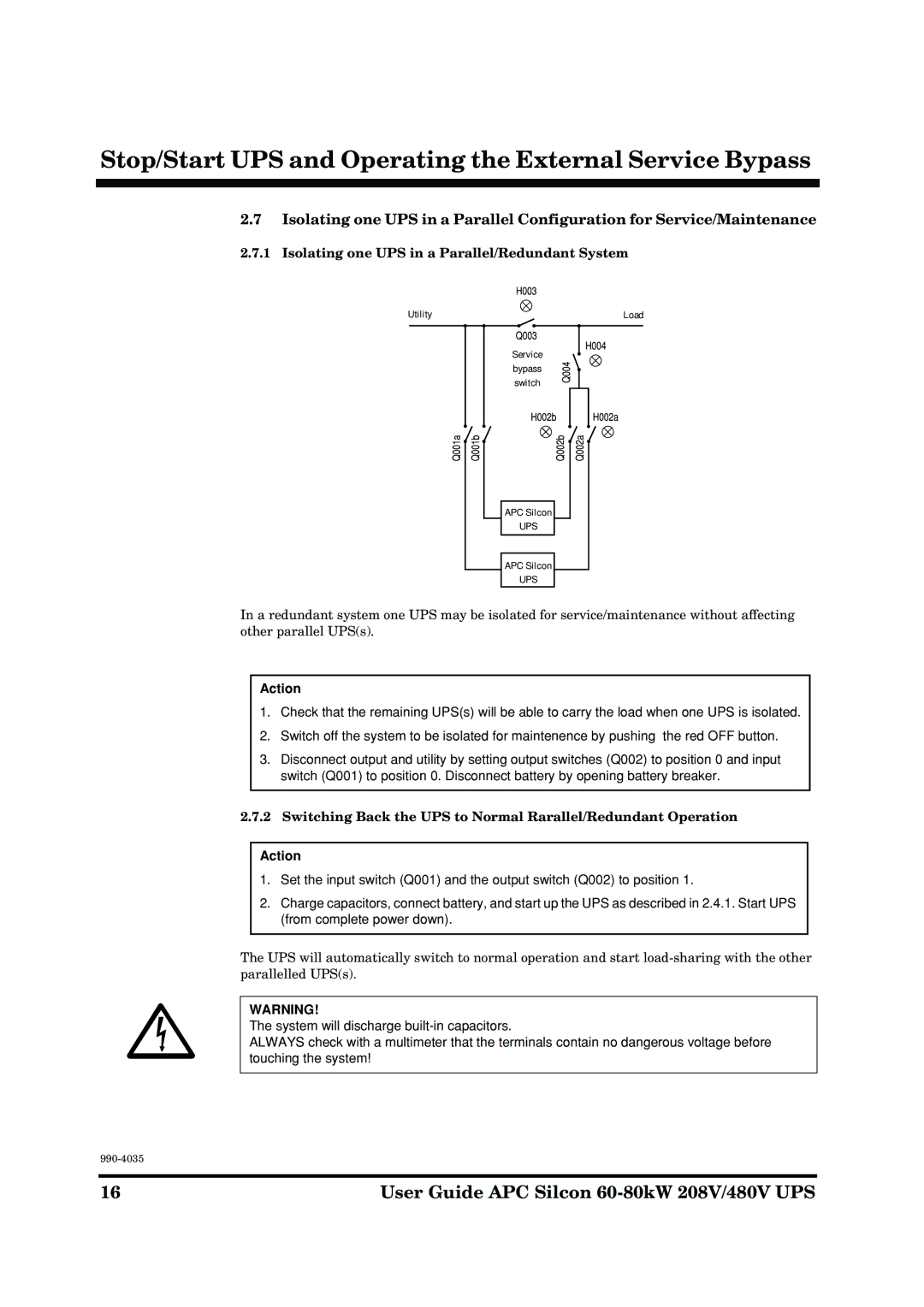60-80KW 208/480V UPS specifications
The APC 60-80KW 208/480V Uninterruptible Power Supply (UPS) is a robust solution designed to ensure continuous power and protection for mission-critical systems and sensitive equipment in data centers and industrial environments. With its impressive capacity, this UPS provides reliable backup power, ensuring operational continuity by delivering clean and stable power to connected loads, even during power disruptions.One of the standout features of the APC 60-80KW UPS is its dual input configuration, enabling it to operate on both 208V and 480V systems. This flexibility allows businesses to effortlessly integrate the UPS into their existing electrical infrastructure while maintaining high efficiency. The UPS’s modular design further enhances its adaptability, allowing users to scale power capacity as their business grows or adjusts to changing demands.
The system incorporates advanced technologies to optimize performance and energy efficiency. The use of high-efficiency power conversion techniques results in reduced energy consumption and lower operating costs, making this UPS an environmentally friendly choice. Additionally, it features a high power factor, which allows it to deliver more usable power to the load, reducing the total cost of ownership.
The APC 60-80KW UPS also includes an intelligent battery management system that maximizes battery life by monitoring and adjusting charging cycles. It employs a hot-swappable battery design, enabling maintenance and replacements without interrupting power to critical systems. This ensures that organizations can maintain uptime while managing their UPS effectively.
The UPS is equipped with an advanced monitoring system that provides real-time visibility into power conditions and UPS performance. An intuitive graphical display allows users to easily track key metrics, while remote management capabilities ensure that the UPS can be monitored and controlled from anywhere, enhancing operational efficiency.
Safety features are paramount in the design of the APC 60-80KW UPS. It includes robust short-circuit protection and thermal management to prevent overheating and damage. Furthermore, the unit is compliant with various industry standards, ensuring reliable operation in a variety of environments.
In conclusion, the APC 60-80KW 208/480V UPS is a reliable, efficient, and advanced solution designed to safeguard crucial infrastructure against power interruptions. Its features, including modularity, dual input configurations, and intelligent monitoring, make it an ideal choice for organizations seeking to enhance their power reliability and operational effectiveness.

